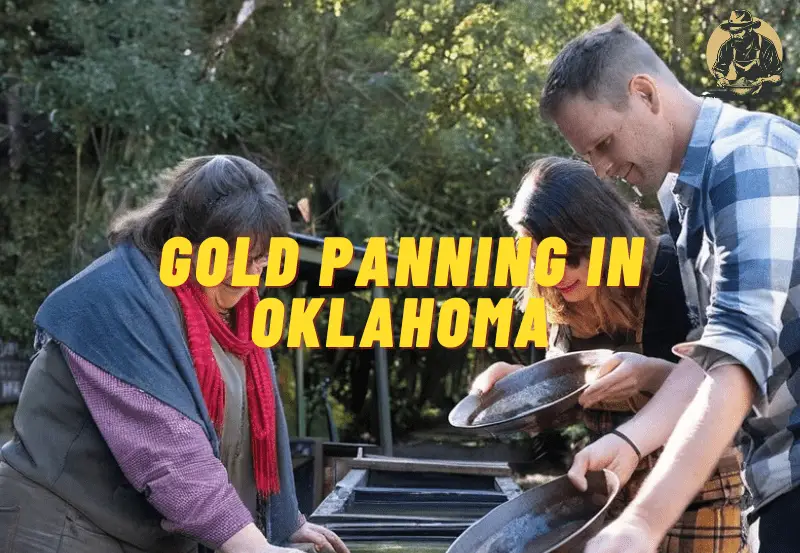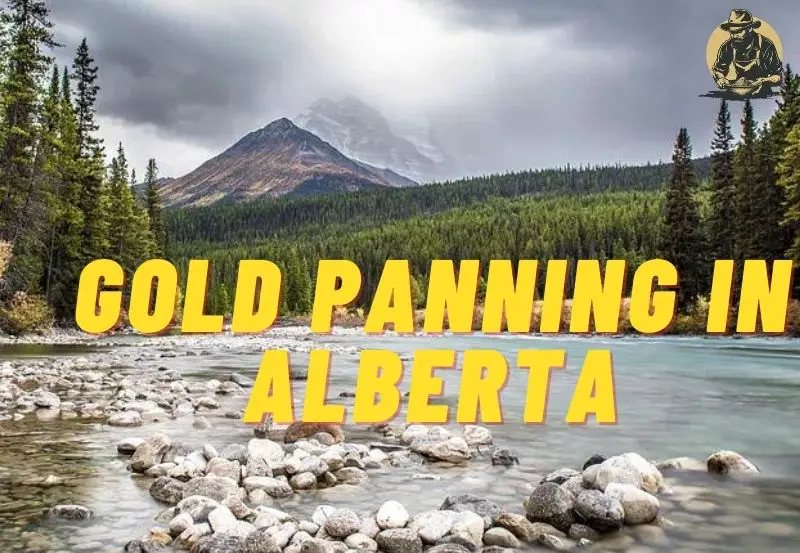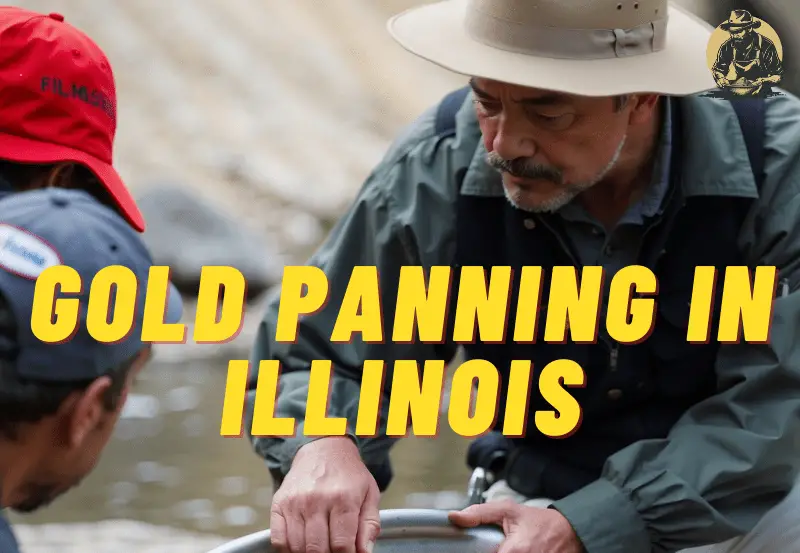Imagine embarking on an exhilarating journey through the rugged landscape of Arizona, armed with nothing but a trusty gold pan and a hunger for adventure. “Gold Prospecting in Arizona: Discovering the Desert’s Hidden Gems – A Complete Guide” is your ultimate companion, providing valuable insights and expert tips to help you uncover the secret treasures that lie hidden amidst the desert sands. Join us as we delve into the enchanting world of gold prospecting, where every gleaming nugget has the potential to transform your wildest dreams into glittering reality. Are you ready to embark on an extraordinary quest for fortune?
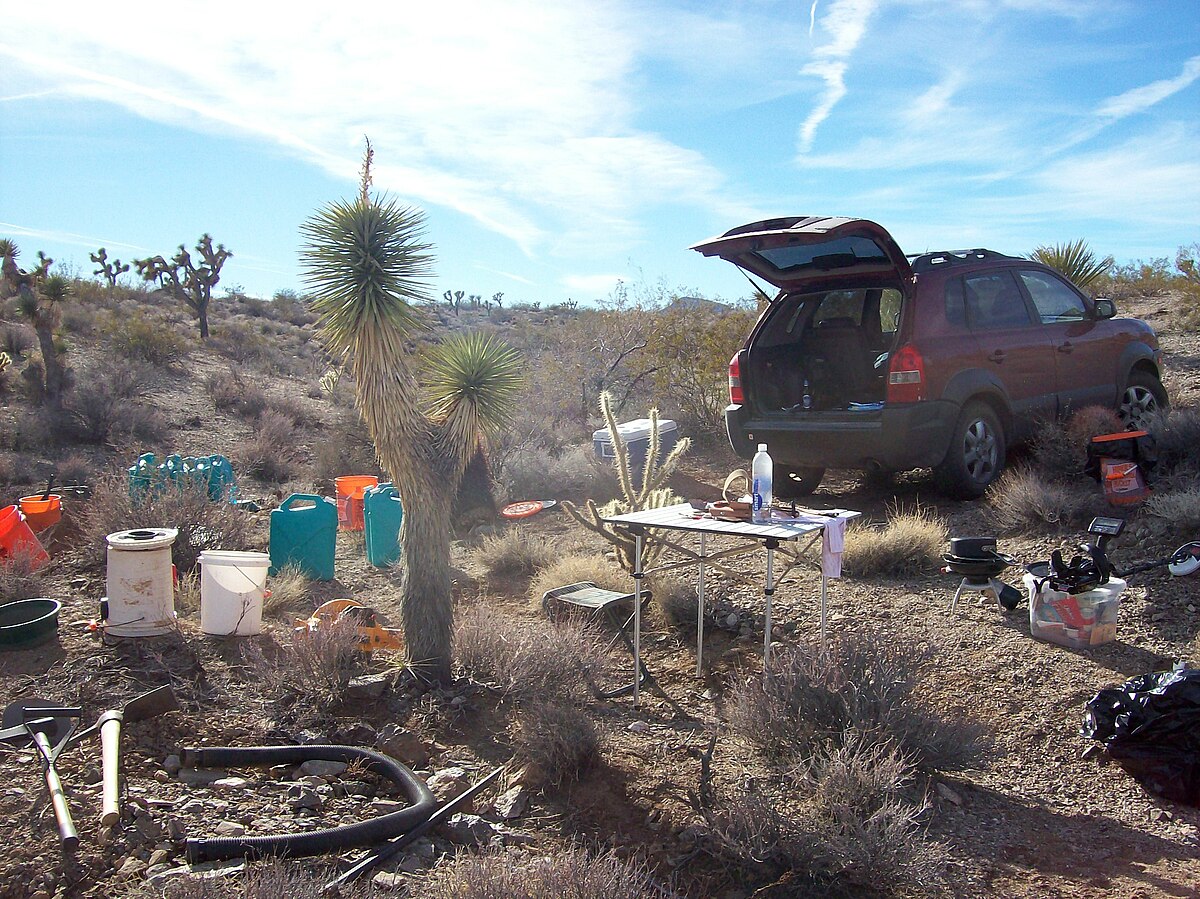
History of Gold Prospecting in Arizona
Native American Mining
For thousands of years, Native American tribes in Arizona, such as the Apache, Navajo, and Hopi, have been mining and extracting gold from the land. They utilized various techniques, including panning and sluicing, to recover gold from streams and rivers. This rich tradition of Native American gold mining is a testament to the abundance of gold in the region.
Spanish Exploration
In the 16th century, Spanish explorers arrived in what is now Arizona in search of gold and other valuable minerals. They ventured into the Grand Canyon and explored the Colorado Plateau, discovering evidence of mining activities carried out by Native Americans. Although the Spanish did not find the vast quantities of gold they had hoped for, their expeditions laid the groundwork for future prospectors.
Gold Rush Era
The mid-19th century brought about the famous gold rushes across America, and Arizona was no exception. Prospectors from all over flocked to the region in search of fortune, and numerous gold mines were established. Towns such as Prescott, Wickenburg, and Tombstone boomed as miners settled in the area. This era marked a significant turning point in Arizona’s gold mining history and has left a lasting impact on the state’s economy and culture.
Modern Mining
Today, Arizona is still a prime location for gold mining. Modern mining techniques, along with advancements in technology and equipment, have made it easier to extract gold from the earth. Large-scale mining operations, as well as smaller individual prospectors, continue to uncover new gold deposits in the state. The rich mining history of Arizona remains alive and thriving in the modern era.
Geology of Arizona Gold Deposits
Formation of Gold Deposits
Gold deposits in Arizona were formed millions of years ago through geological processes. The primary source of gold in the region is the veins and ore bodies that were formed during volcanic activity. As hot fluids circulated through cracks in the Earth’s crust, they deposited minerals, including gold, along the way. Erosion and other geological forces exposed these deposits, making them accessible for prospecting.
Types of Gold Deposits
Arizona is home to various types of gold deposits, including mesothermal and epithermal veins, placer deposits, and sedimentary deposits. Mesothermal veins are the most common and typically contain significant amounts of gold. Epithermal veins are also important and can be found near volcanic regions. Placer deposits, formed through the erosion of veins, are another abundant source of gold in Arizona.
Regions with High Gold Potential
Several regions in Arizona have a high potential for gold mining. The Bradshaw Mountains, Weaver Mountains, Superstition Mountains, and the Colorado River are just a few areas known for their rich gold deposits. Additionally, the Lynx Creek and the Hassayampa River have historically been fruitful regions for gold prospecting. It is essential for prospectors to research and explore these potential areas to increase their chances of success.
Permits and Regulations for Gold Prospecting in Arizona
State Laws and Regulations
Before engaging in gold prospecting activities in Arizona, it is crucial to familiarize yourself with the state laws and regulations governing mining. Arizona has specific statutes related to recreational and commercial mining activities, which include obtaining permits, adhering to environmental regulations, and reporting any findings. Prospective miners should consult the Arizona Department of Mines and Mineral Resources for detailed information on state regulations.
Federal Laws and Regulations
In addition to state laws, federal laws and regulations also apply to gold prospecting activities in Arizona. The General Mining Act of 1872 is a federal law that governs the mining of minerals, including gold, on federal lands. It grants individuals the right to explore for and extract valuable minerals from public lands, subject to certain conditions and royalties. Prospective miners must ensure compliance with federal laws before embarking on any mining activities.
Obtaining Permits and Permissions
To legally prospect for gold in Arizona, individuals must obtain the necessary permits and permissions. The process typically involves submitting an application, paying applicable fees, and demonstrating compliance with all regulations. It is essential to contact the appropriate government agencies, such as the Bureau of Land Management and the Arizona State Land Department, to obtain the required permits and seek guidance throughout the process.
Also read our directory of Gold Prospecting Clubs across America here
Essential Tools and Equipment for Gold Prospecting in Arizona
Metal Detectors
Metal detectors are invaluable tools for gold prospectors in Arizona. They work by detecting metallic minerals, including gold, buried beneath the surface. Modern metal detectors are equipped with advanced technology and features that improve the accuracy and efficiency of gold detection. From beginner-friendly models to professional-grade detectors, there is a wide range of options available to suit every prospector’s needs and budget.
Panning Kits
Panning kits are one of the most basic and effective tools for gold prospecting, especially in areas with placer deposits. These kits typically include a gold pan, classifier, snuffer bottle, and other accessories needed to recover gold by panning. Panning involves swirling water and sediment in a pan to separate heavier gold particles from lighter materials. It is a simple yet highly rewarding technique that can yield considerable amounts of gold.
Sluice Boxes
Sluice boxes are long, narrow troughs equipped with riffles and mats that trap gold as water passes through. They are particularly useful for processing larger quantities of material, such as streambed deposits or sediment from drywashing. Sluicing allows for efficient gold recovery, as the heavy gold particles settle in the riffles while lighter material washes away. Various sizes and configurations of sluice boxes are available to accommodate different prospecting needs.
Gold Dredges
Gold dredges are powerful machines that extract gold from streambeds and river bottoms. They utilize suction hoses to vacuum material from the riverbed and process it through a sluice box or other recovery systems. Gold dredges are ideal for prospectors looking to cover larger areas and process substantial volumes of material. As with any mining equipment, it is essential to research and understand the specific regulations and restrictions regarding the use of gold dredges in Arizona.
Drywashers
Drywashers are efficient tools for prospecting in arid regions, where water is scarce or unavailable for panning or sluicing. These machines use air and vibrations to separate gold from dry soil or gravel. Drywashing allows prospectors to process large amounts of material with minimal water usage. Since Arizona has many desert areas suitable for drywashing, it is an important technique to consider for prospecting in the state.
Choosing the Right Locations for Gold Prospecting in Arizona
Public Land vs. Private Land
When choosing locations for gold prospecting in Arizona, it is essential to understand the distinction between public and private land. Public lands, such as national forests and Bureau of Land Management (BLM) lands, offer opportunities for recreational prospecting, subject to certain regulations. On the other hand, prospecting on private land requires the landowner’s permission. Understanding land ownership and access rights is crucial to ensure legal and responsible prospecting.
Popular Gold Prospecting Areas
Arizona is renowned for its gold-rich areas that attract prospectors from all over the world. Some of the popular gold prospecting areas in the state include the Bradshaw Mountains, Black Canyon, Lynx Creek, and the Superstition Mountains. These regions have a long history of gold mining and offer ample opportunities for both recreational and commercial prospecting. It is worth researching these areas and consulting experienced prospectors to increase the chances of success.
Researching Potential Areas
Before setting off on a gold prospecting adventure in Arizona, it is crucial to conduct thorough research on potential areas. This includes studying geological maps, reviewing historical mining records, and consulting local prospecting associations or clubs. Online resources, books, and local libraries can also provide valuable information on past gold discoveries, geological formations, and potential hotspots. Investing time in comprehensive research increases the likelihood of finding gold-rich areas.
Techniques and Methods for Gold Prospecting
Panning
Panning is a time-honored technique for gold prospecting that involves separating gold from sediment using a shallow pan and water. Prospectors gently swirl the pan, allowing the water to wash away lighter material while the heavier gold particles settle. Panning is a skill that requires patience and practice, but it can be a rewarding method for capturing fine gold in Arizona’s streams and rivers.
Sluicing
Sluicing involves using a long trough or sluice box with riffles to process large volumes of material. Water is continuously flowing through the sluice, carrying away lighter sediment while gold settles in the riffles. This method is ideal for processing placer deposits found in streambeds and works best when there is ample water available. Sluicing can increase productivity and capture more significant amounts of gold compared to panning.
Metal Detecting
Metal detecting is a versatile technique that enables prospectors to detect gold hidden beneath the surface. Using a metal detector, prospectors can quickly cover large areas and efficiently locate gold-bearing veins or nuggets. Metal detectors come in various styles, including handheld and ground search models, each with its own set of features and capabilities. Metal detecting is an exciting method that allows prospectors to uncover hidden treasures in Arizona’s gold-rich soil.
Drywashing
Drywashing is an effective method for prospecting in arid regions where water is scarce or restricted. Prospectors use drywashers, which use air to separate gold from dry soil or gravel. The material is fed into the drywasher, where it is agitated and blown by air, allowing lighter particles to be carried away while gold settles in riffles or traps. Drywashing is particularly popular in desert areas of Arizona and can be an excellent way to recover gold in locations where water is limited.
Dredging
Dredging involves using a specialized machine, known as a dredge, to extract gold from streambeds or river bottoms. The dredge uses a suction hose to vacuum material from underwater and process it through a sluice box or other recovery systems. Dredging can cover large areas and recover substantial amounts of gold, making it an attractive technique for those looking to maximize their prospecting efforts. However, it is crucial to be aware of specific regulations and restrictions regarding the use of dredges on Arizona waterways.
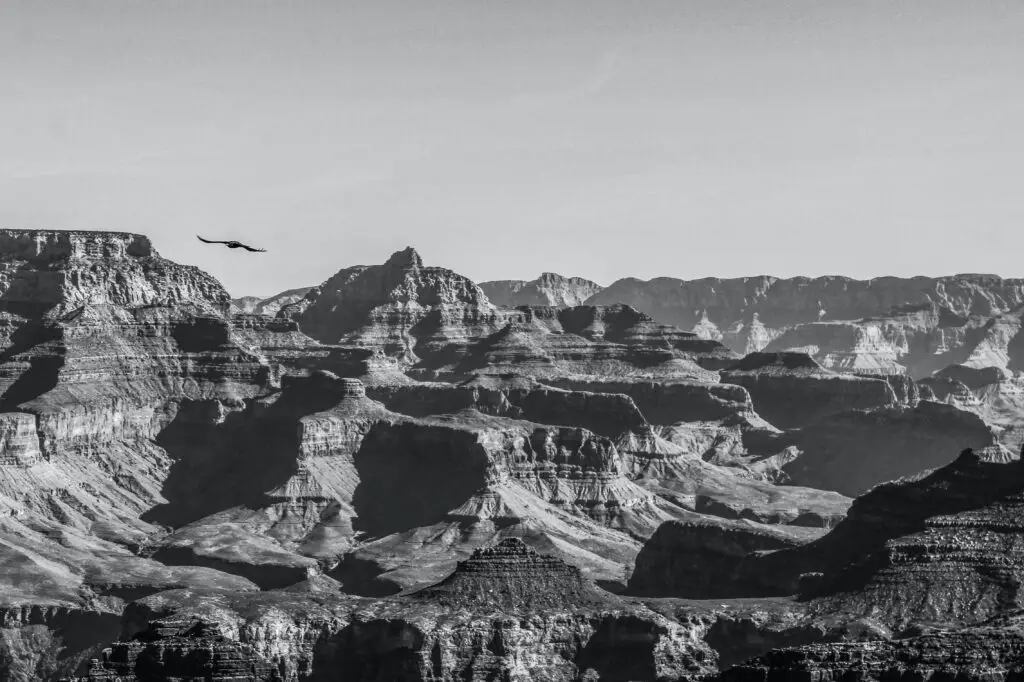
Safety Tips for Gold Prospecting
Equipment Safety
Ensuring the safety of equipment is essential when engaging in gold prospecting. Regularly inspect all tools and equipment for any signs of damage or wear. Keep all equipment properly maintained and in good working order. When using power tools, follow the manufacturer’s instructions and use safety gear, such as goggles and gloves, to protect yourself. Taking proactive measures to maintain equipment safety reduces the risk of accidents and enhances the overall prospecting experience.
Environmental Considerations
Responsible gold prospecting involves being mindful of the environment and minimizing the impact of mining activities. Always follow Leave No Trace principles, including packing out all trash and waste, avoiding unnecessary disturbance to plant and animal habitats, and adhering to any environmental regulations. Choose prospecting locations where the impact on sensitive ecosystems can be minimized. By being environmentally conscious, prospectors can protect the natural beauty of Arizona’s landscapes for future generations.
Extreme Weather Precautions
Arizona’s desert climate can be extreme, with scorching summers and rapidly changing weather conditions. When prospecting, it is vital to take precautions to ensure personal safety in such conditions. Always carry plenty of water to stay hydrated, especially during hot months. Protect yourself from the sun by wearing a hat, sunscreen, and lightweight clothing. Additionally, be prepared for unexpected weather changes, such as thunderstorms or flash floods, by monitoring weather forecasts and being alert to changing conditions.
Identifying and Evaluating Gold Deposits
Visual Characteristics of Gold
Gold, with its unmistakable yellow color and metallic luster, can be easily identified by sight. However, in Arizona’s gold-rich landscapes, it is essential to be able to differentiate between gold and other minerals that may resemble it. Familiarize yourself with common minerals found in gold-bearing deposits to avoid mistaking them for actual gold. Additionally, learn to recognize different forms of gold, such as nuggets, flakes, or fine particles, to accurately assess the quality and potential value of a deposit.
Sampling and Assaying
To evaluate the potential value of a gold deposit, it is crucial to collect representative samples and assess their gold content. Sampling involves collecting small amounts of material from various locations within a deposit or prospecting area. These samples can then be processed through panning, sluicing, or other methods to recover the gold contained within. To obtain precise information about the gold content, samples can be sent to a laboratory for assaying, providing an accurate measure of the gold’s purity and value.
Assessing Ore Grades
Understanding the grade of a gold deposit is essential for determining its viability and potential profitability. The grade refers to the concentration of gold within the ore or material being sampled. Higher-grade deposits contain a higher concentration of gold, making them potentially more lucrative for prospectors. By assessing the ore grades through sampling and assaying, prospectors can make informed decisions about whether a particular deposit is worth further exploration and extraction.
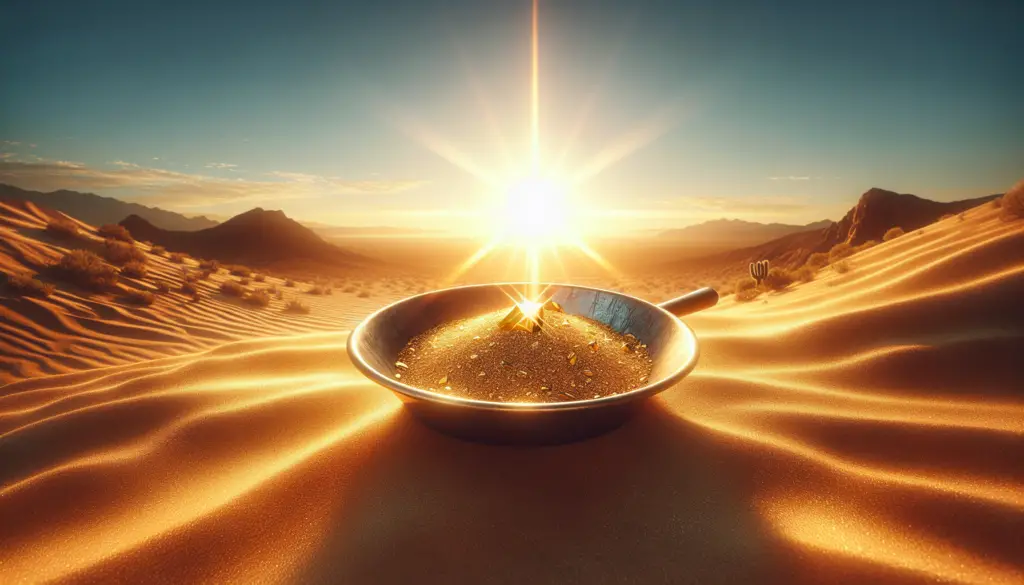
Recreational vs. Commercial Gold Prospecting
Recreational Gold Prospecting
Recreational gold prospecting refers to the pursuit of gold as a hobby or leisure activity. Individuals engaged in recreational prospecting typically do not intend to profit from their finds. Instead, they enjoy the thrill of the hunt, the beauty of nature, and the camaraderie of fellow prospectors. Recreational prospectors must still adhere to all applicable laws and regulations to ensure ethical and responsible mining practices.
Commercial Gold Mining
Commercial gold mining involves the extraction and processing of gold on a larger scale with the intent to generate profits. Commercial mining operations require extensive planning, investment in equipment and infrastructure, and compliance with various regulations and permits. These operations employ advanced mining techniques, such as open-pit or underground mining, and employ a significant workforce. Commercial gold mining plays an important role in Arizona’s economy, contributing to job creation and revenue generation.
Famous Gold Mines and Ghost Towns in Arizona
Vulture Mine
Located near Wickenburg, the Vulture Mine is one of Arizona’s most famous gold mines. Established in the 1860s, it became one of the most productive mines in the state, yielding substantial amounts of gold and silver. Today, the Vulture Mine is a popular tourist attraction, offering guided tours that provide a glimpse into the area’s rich mining history.
Oatman
Oatman, located in the Black Mountains of Arizona, was once a bustling gold mining town. The town boomed in the early 1900s, attracting thousands of miners looking for fortune. Today, Oatman is known for its charming rustic atmosphere and preserved buildings, giving visitors a unique glimpse into the past. The town’s streets are home to wild burros, descendants of the early mining days, adding to its distinctive character.
Copper Queen Mine
Situated in Bisbee, the Copper Queen Mine is renowned for its significant copper deposits. However, it also produced substantial amounts of gold and other minerals. The mine operated for over a century, contributing to Bisbee’s growth and economy. Today, visitors can explore the mine on guided tours, immersing themselves in the history and heritage of this iconic Arizona mining town.
Goldfield
Goldfield is a historic ghost town, located near the Superstition Mountains. It emerged during the gold rush era and was once a prosperous mining town. Though short-lived, Goldfield left a lasting legacy, and today it offers visitors a chance to experience its rich history. The town features preserved buildings, exhibits, and reenactments that provide insight into Arizona’s gold mining past.
In conclusion, Arizona’s rich history of gold prospecting spans centuries, from the techniques employed by Native American tribes to the Spanish explorers and the modern-day prospectors who continue to extract gold from the region’s diverse deposits. Understanding the geology, obtaining the necessary permits, and equipping oneself with the right tools are essential steps for successful gold prospecting in Arizona. By adhering to safety measures, being environmentally conscious, and conducting thorough research, prospectors can embark on exciting adventures and potentially uncover the desert’s hidden gold gems. Whether pursuing gold as a recreational hobby or engaging in commercial mining, Arizona offers vast opportunities for those seeking to uncover the valuable treasure that lies beneath its rugged landscapes.

